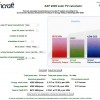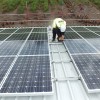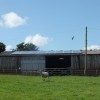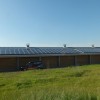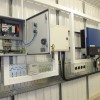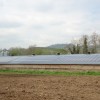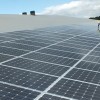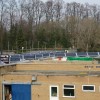Solar PV Calculator
How much income, energy and carbon savings, will my PV System Generate?
The Standard Assessment Procedure (SAP) is used to assess the energy performance of dwellings and thereby helps deliver many of Government’s energy and environmental policy objectives. The performance of solar PV systems is impossible to predict with certainty due to the variability in the amount of solar radiation (sunlight) from location to location and from year to year. Our projected FIT benefits have been generated using a SAP Calculator that uses historical regional climate data to try and provide guidance. Results should not be considered as a guarantee of performance.
Installers are obliged to provide their customers with a SAP Report, but it’s possible to run basic calculations via the Internet. For more information visit the DECC Website.
When using these calculators it is important to confirm that the climate dataset used covers the West Midlands geographical area (assuming that is where your intended installation site is located). Salop Energy Commercial has introduced a SAP Calculator on their website (www.salopenergy.com) that will be set to the relevant climate dataset covering Shropshire and surrounds.
The underlying climate database is revised every 4-5 years and the most recent is SAP 2009 solar PV calculator. If you use a Sap calculator from another source check the title because there are still some of the older 2005 calculators accessible via the Internet.
Using a SAP Solar PV Calculator
Using the calculator is otherwise fairly self-intuitive.
Manufacturer/Model: Top left is the PV Panel Manufacturer drop down menu. Simply select your preferred module and then select the correct model from the dropdown menu below.
No. of Panels: Below again, to enter the number of modules your site can accommodate. If you are doing your own survey you will need to allow for a 30 cm (12 inch) clear margin all the way round the boundary of the roof - this is a ’NO GO’ installation area for reasons covered further on in this guide. Also take note of any shaded areas from roof architecture and neighbouring trees and buildings. Avoid areas close to bird perching areas such chimney stack bases to avoid fouling of expensive modules.
Orientation: The options are N,NE,E, SE, S, SW, W and NW. You should note that SE and SW return the same results, as do NW and NE. The key here is the number of degrees from South your intended site faces. This is often referred to as the ‘azimuth angle’. The azimuth angle specifies how many degrees the surface of the module differs from the exact south-facing direction in either an easterly or southerly direction.
Tilt of Panel: Select the most relevant range - tilts of 20° to 50° are generally acceptable with tilts of 30° to 45° forming the optimum range.
Shading: is likewise dealt with by ranges. The crucial period of the day to be as shade free as possible is 9.00 am to 3.00 pm.
Power Exported: This can only be a speculative guess unless you are directing all the output to a battery store or the Grid so the result will be ‘zero’, or if you elect for the ‘Deemed 50%’ option.
Adjust Fuel Prices: This is set to a default 12.06 pence, but you may be paying more than this. Check your most recent bill and enter the correct unit (kWh) price. Now click the ‘Calculate’ button and review the results. Summing the three figures yields the total value of benefits.





